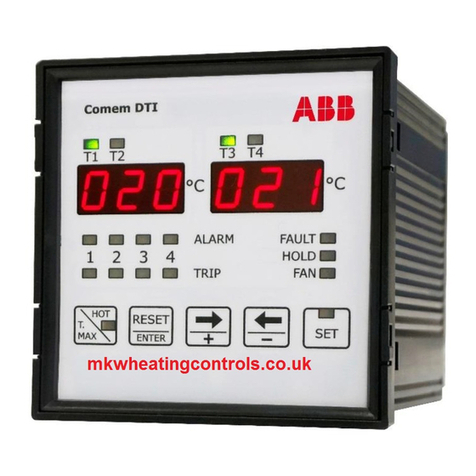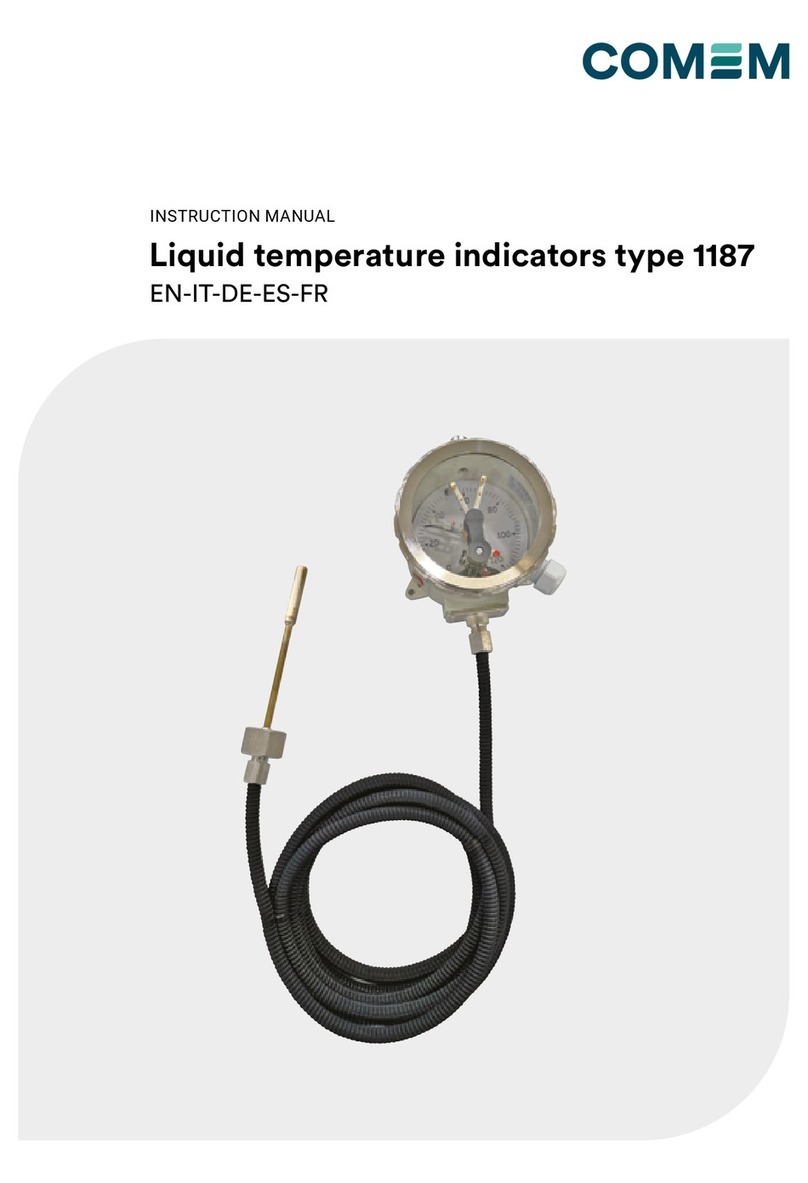
TEMPERATURE MONITORING UNIT DTI AND EDTI
2
Content index
Safety ........................................................... 3
DTI and eDTI ................................................. 4
Electrical diagram......................................... 6
Front panel description................................. 7
Programming of the device .......................... 8
Modality of tripping and restore ................. 14
Diagnostic .................................................. 15
Visualization of the maximum
measured temperature............................... 16
Visualization of the channels with
the higher temperature............................... 16
Test of the light signaling ........................... 16
Exclusion of the input probes
not used...................................................... 16
Technical features...................................... 17
Movement, transport and storage .............. 17
Appendix A: MODBUS address................... 78
Dimensions................................................. 79
Content index
Sicurezza ................................................... 18
DTI / eDTI.................................................... 19
Schema elettrico ........................................ 21
Vista frontale dell’apparecchio................... 22
Programmazione del dispositivo................ 23
Segnali di allarme e riarmo......................... 29
Auto-diagnostica ........................................ 30
Visualizzazione della temperatura
massima..................................................... 31
Visualizzazione dei canali con la
temperatura maggiore................................ 31
Prova delle spie LED................................... 31
Estromissione degli ingressi PT100 non
utilizzati ..................................................... 31
Caratteristiche tecniche ............................. 32
Stoccaggio.................................................. 32
Appendce A: MODBUS address.................. 78
Dimensioni.................................................. 79
Inhalt
Sicherheit ................................................... 33
DTI und eDTI............................................... 34
Schaltplan................................................... 36
Beschreibung des Frontpanels................... 37
Programmierung der Einheit....................... 38
Abschalt- und Reset-Modus ....................... 44
Fehlersuche................................................ 45
Anzeige der gemessenen
Höchsttemperatur ...................................... 46
Anzeige der Kanäle mit der höheren
Temperatur................................................. 46
Testen der Warnleuchten............................ 46
Ausschließen der nicht genutzten
Fühlereingänge........................................... 46
Technische Merkmale ................................ 47
Heben, Transport und Lagerung ................. 47
Anhang A: MODBUS-Adresse..................... 78
Abmessungen............................................. 79
Índice de contenidos
Seguridad ................................................... 48
DTI y eDTI ................................................... 49
Diagrama eléctrico ..................................... 51
Descripción del panel frontal...................... 52
Programación del dispositivo..................... 53
Modalidad de disparo y restauración ......... 59
Diagnóstico ................................................ 60
Visualización de la temperatura máxima
medida........................................................ 61
Visualización de los canales con la
temperatura más alta ................................. 61
Prueba de la señalización luminosa........... 61
Exclusión de las sondas de entrada
no utilizadas ............................................... 61
Características técnicas............................. 62
Movimiento, transporte y
almacenamiento......................................... 62
Apéndice A: Dirección MODBUS................. 78
Dimensiones............................................... 79
Index du contenu
Sécurité ...................................................... 63
DTI et eDTI.................................................. 64
Schéma électrique...................................... 66
Description du panneau avant.................... 67
Programmation de l’appareil ...................... 68
Modalité de déclenchement et de
restauration ................................................ 74
Diagnostic .................................................. 75
Visualisation de la température
maximale mesurée ..................................... 76
Visualisation des canaux avec
la température plus élevée ......................... 76
Test de la signalisation lumineuse ............. 76
Exclusion des sondes d’entrée
non utilisées ............................................... 76
Caractéristiques techniques....................... 77
Mouvement, transport et stockage............. 77
Annexe A: Adresse MODBUS ..................... 78
Dimensions................................................. 79





























